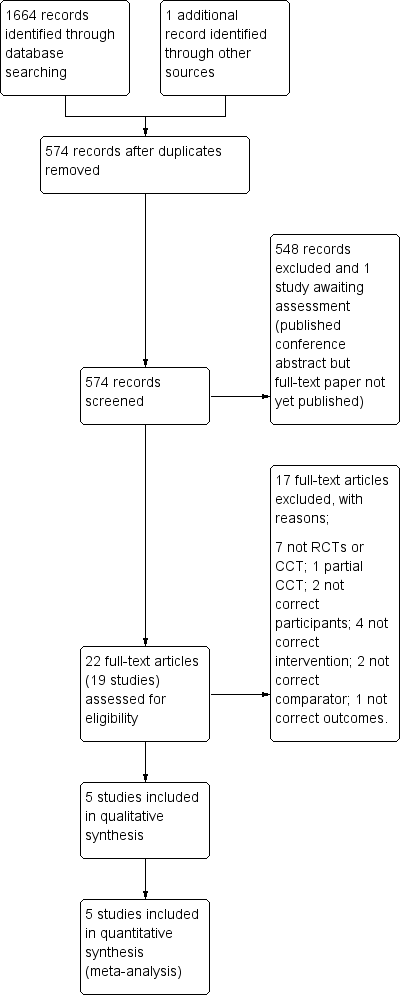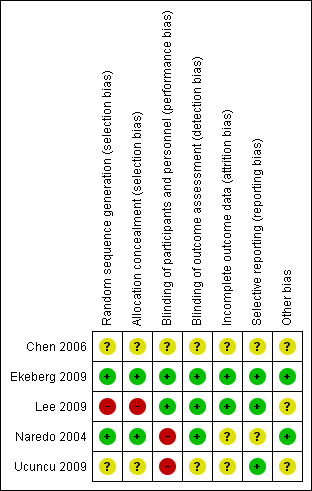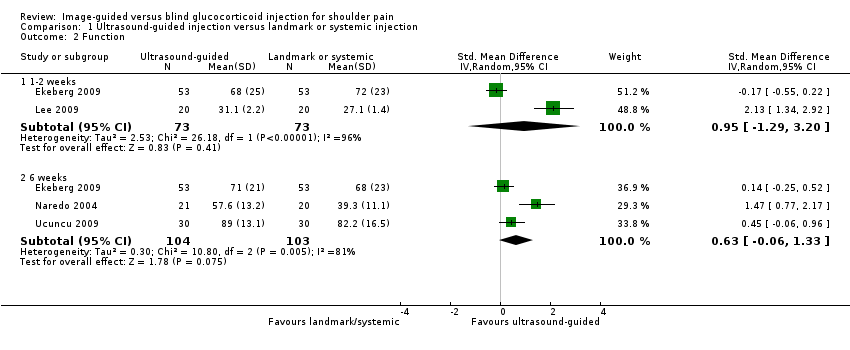Contenido relacionado
Revisiones y protocolos relacionados
Mabel Qi He Leow, Qishi Zheng, Luming Shi, Shian Chao Tay, Edwin SY Chan | 13 abril 2021
Porjai Pattanittum, Tari Turner, Sally Green, Rachelle Buchbinder | 31 mayo 2013
Rachelle Buchbinder, Sally Green, Joanne M Youd | 20 enero 2003
John HY Moi, Melonie K Sriranganathan, Christopher J Edwards, Rachelle Buchbinder | 4 noviembre 2013
Joshua Zadro, Adam Rischin, Renea V Johnston, Rachelle Buchbinder | 26 agosto 2021
Miranda Cumpston, Renea V Johnston, Lainie Wengier, Rachelle Buchbinder | 7 julio 2009
Peter C Gøtzsche, Helle Krogh Johansen | 24 enero 2005
Margaret M Wallen, Donna Gillies | 25 enero 2006
Mario F Delgado‐Noguera, Jessica M Forero Delgadillo, Alexis A Franco, Juan C Vazquez, Jose Andres Calvache | 21 noviembre 2018
Francisca Sivera, Mihir D Wechalekar, Mariano Andrés, Rachelle Buchbinder, Loreto Carmona | 1 septiembre 2014











